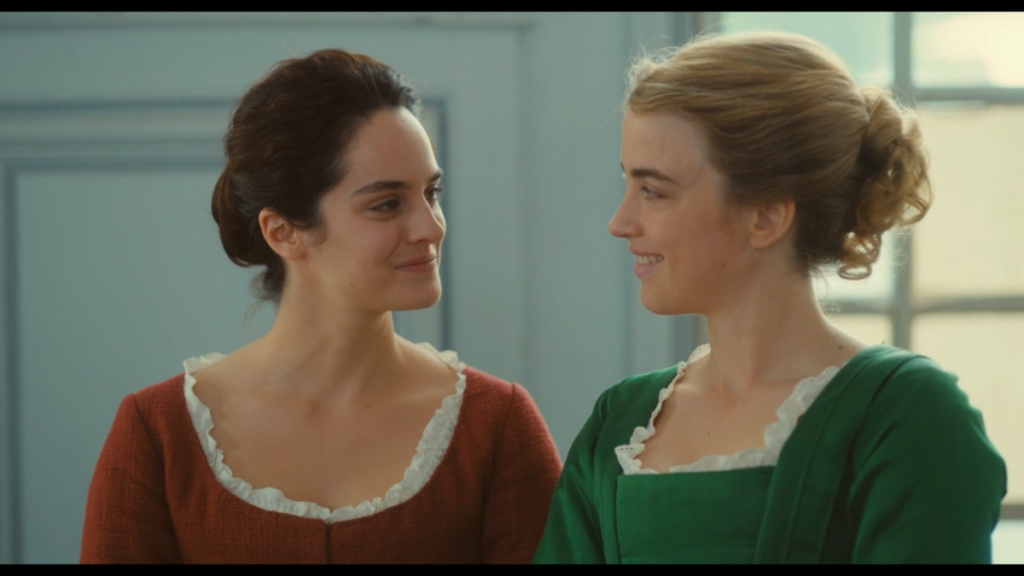According to Laura Mulvey, the male gaze is a way of depicting women in movies through the eyes of a heterosexual man, and women are portrayed as passive objects that serve to please both men on-screen and male viewers off-screen. One way that men derive pleasure from women is simply by watching them: there are countless incidences of men nonconsensually watching women, who are often performing private activities like changing clothes or engaging in sexual activity without knowing they’re being watched. This voyeurism is usually disregarded as acceptable behavior, played off for laughs since “boys will be boys”, or even applauded (as we saw in Rear Window, for example). However, Celine Sciamma’s Portrait of a Lady on Fire actively challenges the male gaze and this pattern of nonconsensual looking, most notably through the cinematography of the film.
Marianne originally arrives at the island to observe Heloise and paint her bridal portrait in secret. Marianne engages in some nonconsensual looking during the first part of the film, watching Heloise secretly during their walks. Marianne’s original objective when arriving at the island is to present Heloise as a desirable bride-to-be to a wealthy Milanese suitor, framing Heloise in a lens that appeals to the heterosexual man. Although not violating Heloise’s privacy as outrightly as men have in other media, Marianne still somewhat fits into this man’s role, which is reinforced by her character traits — she often poses in a masculine fashion, smokes tobacco out of a pipe as a man traditionally would, and even uses a man’s name when presenting her art near the end of the movie. However, Marianne’s gaze is immediately returned and challenged by Heloise’s own, forcing Marianne to look away and creating a sense of discomfort.
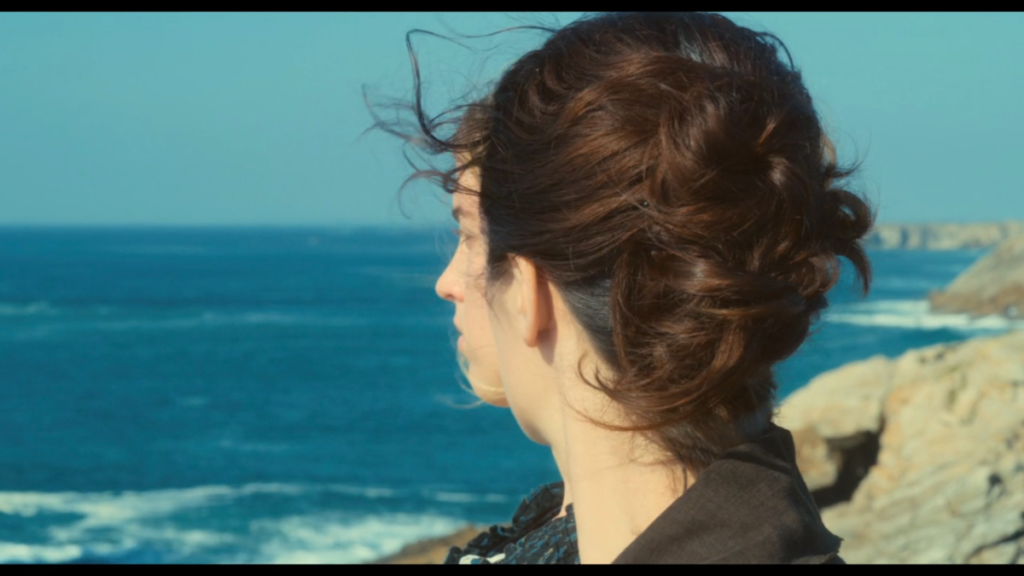
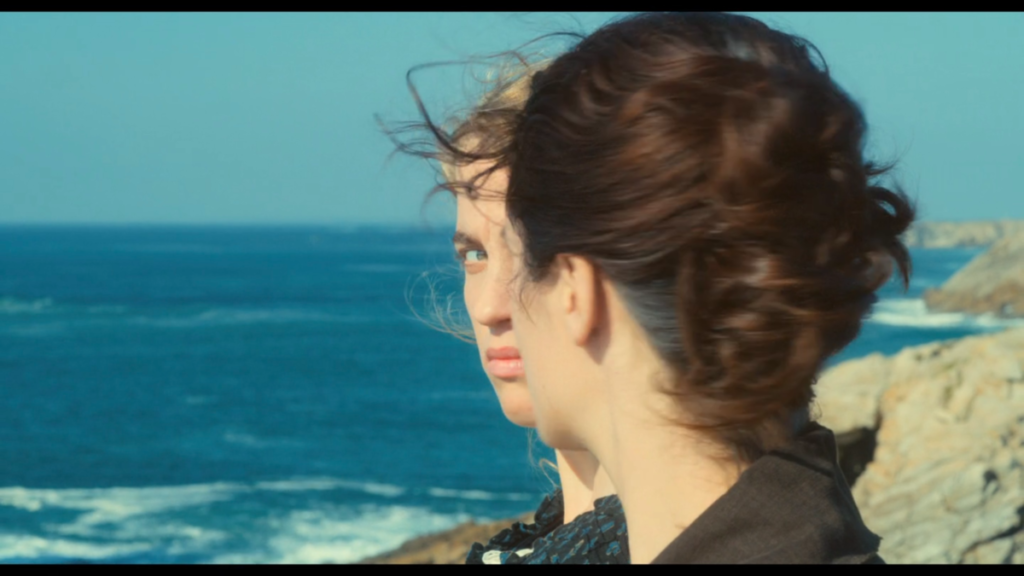
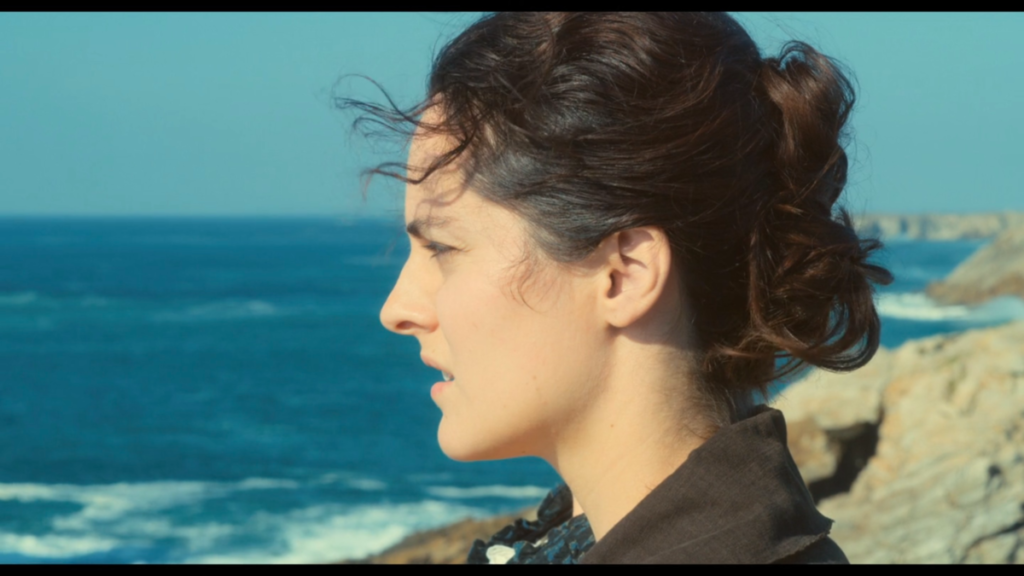
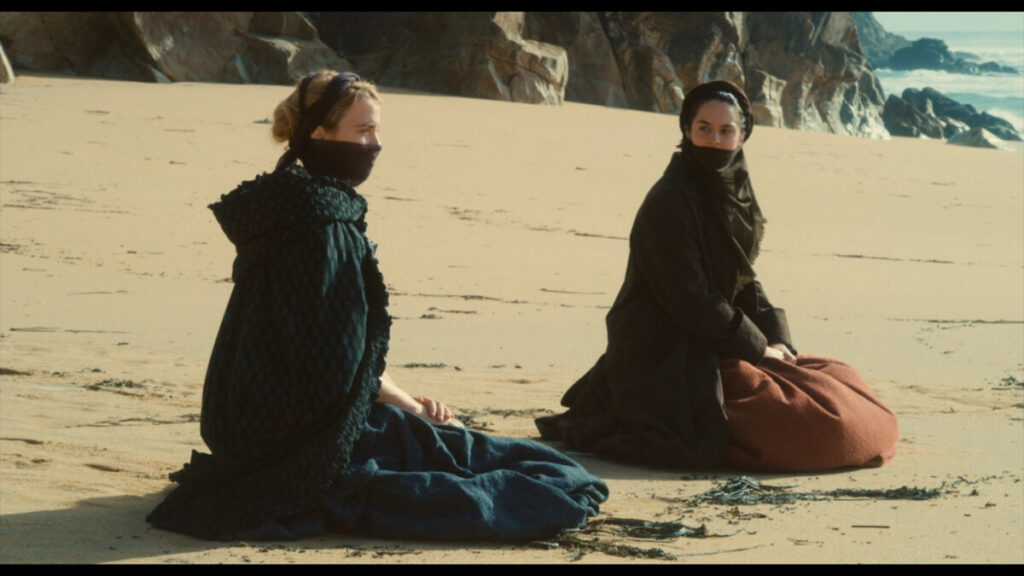
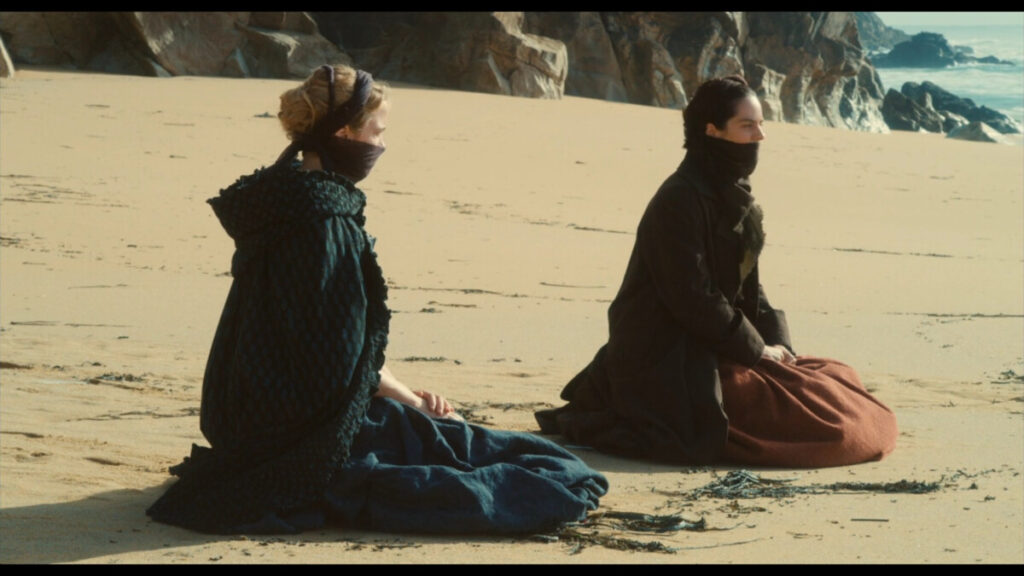
In traditionally male-driven films, the watched women are simply objects meant to be viewed, appearing perfect and desirable despite being caught in what would be private, unfiltered settings. The traditional male gaze depicting a look into the private lives of these objectified women reinforces a harmful norm: that women must inevitably fulfill a performative role. According to the male gaze, a woman should always try to appeal to men’s desires, even when nobody’s watching (because someone actually might be watching!). One example that comes to mind is Miss Torso in Rear Window. Even in the opening scene of the film, Miss Torso’s desirability is cemented when she bends down to pick up her bra, exposing her bare back and her backside, and shows off her legs as she practices her dancing. Her blonde hair is always perfectly coiffed, and her body is constantly on display in revealing outfits. At no point does Miss Torso seem physically unattractive or vulnerably unposed, despite the fact that only her private life is on display for the entirety of the film. In the cinematography of Rear Window, Jeffries, who is watching his neighbors nonconsensually, and Miss Torso are rarely, if ever, shown in the same shot. Jeffries, the viewer, is always kept separate from Miss Torso, the viewed, both cinematically and at a physical distance; this composition is often mirrored in other films where nonconsensual looking occurs.

However, Sciamma and cinematographer Claire Mathon challenge this male-dominated notion of viewing with the female gaze. Sciamma and Mathon deliberately choose to frame Marianne and Heloise in the same shot, even when Marianne is catching glimpses of Heloise’s features. In addition, Marianne and Heloise are placed physically close enough that Heloise notices Marianne’s viewing of her and returns Marianne’s gaze with her own. Rarely are the two women kept at a physical distance where Marianne can observe Heloise from afar without Heloise’s knowledge. The male gaze and female gaze markedly differ in this way: in the female gaze, the viewed and the viewer are depicted as equals with interchangeable and flexible roles (for example, Marianne goes from the viewer to the viewed within a split second when Heloise catches her looking). In the male gaze, conversely, the viewer (typically a heterosexual man) holds the power over the viewed (an objectified, attractive woman) and never has to endure being viewed. The viewer rarely faces consequences for his actions, and he never experiences the violation of privacy that he himself is taking advantage of.
When Marianne uses nonconsensual gazing to capture Heloise’s likeness, she is unsatisfied with the first portrait and ends up destroying it. But when Heloise becomes aware of the portrait’s existence, she agrees to pose for Marianne, and with Heloise’s permission, Marianne’s gaze of Heloise becomes consensual and, at the same time, reciprocal. Marianne expresses sympathy towards Heloise being observed to be painted; however, Heloise rebutts with, “We’re in the same place. Exactly the same place… If you look at me, who do I look at?” This two-way looking not only builds the bond between the two women, but also helps Marianne paint a better portrait. “This time, I like it,” Heloise declares. The growth of their relationship is no longer comprised of a power dynamic between the viewer and the viewed, but instead evolves into two equals who both are seen and see each other. The cinematography of the film serves to capture the evolution of Heloise and Marianne’s relationship through its framing and composition of the shots, as the two women are depicted equally and side-by-side by the end of the film.
